The Correlation between GDP PPP Per Capita and GDP PPP Per Area in Oceania
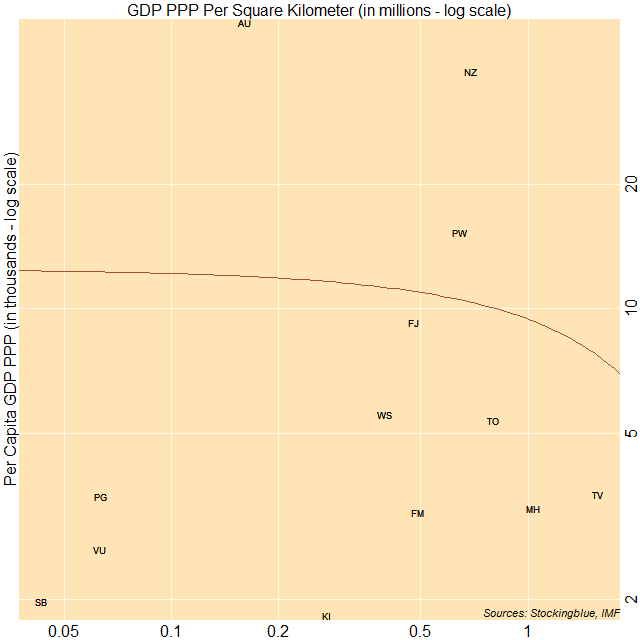
The correlation between per capita gross domestic product based on purchasing power parity (GDP PPP) and GDP PPP per area in Oceania is weak. The three largest economies on a per capita basis have either a moderate or high per area GDP relative to other countries on the continent.
Gross Domestic Product by Arable Land in Oceania
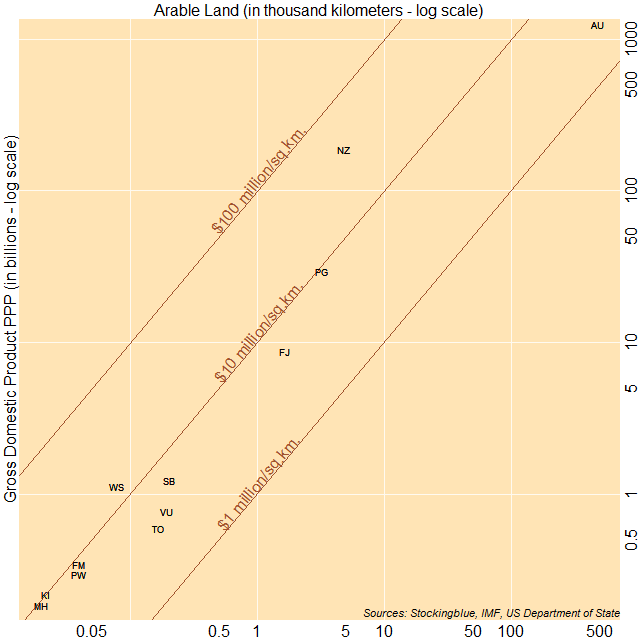
The chart above shows economic output as it relates to arable land. The countries to the top left have a larger ratio of gross domestic product (GDP) to arable land, while countries to the bottom right have a smaller ratio of GDP to arable land. New Zealand, Samoa, and Kiribati have the largest ratio of GDP to area whereas Australia, Tonga, and Vanuatu have the smallest ratio of GDP to area.
Gross Domestic Product by Land Area in Oceania
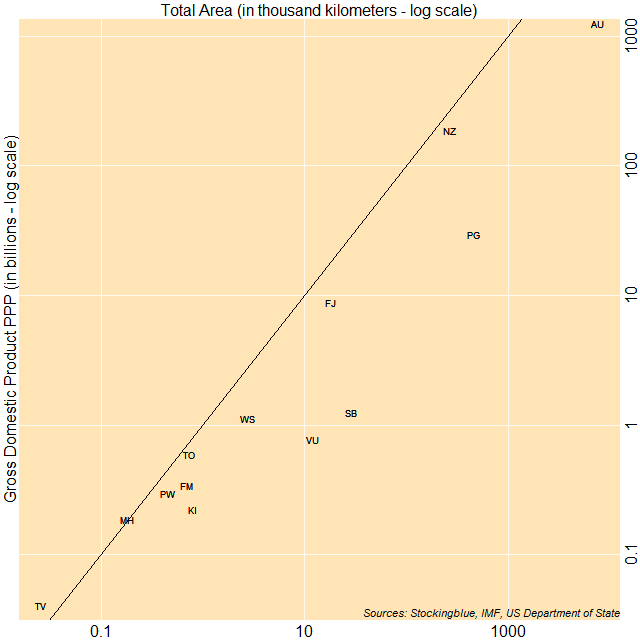
The chart above shows economic output as it relates to land area. The countries to the top left of the diagonal line have a gross domestic product (GDP) of over one million international dollars per square kilometer, while countries to the bottom right have a GDP that is less than one million dollars per square kilometer. Tuvalu, the Marshall Islands, and Tonga have the largest ratio of GDP to area whereas the Solomon Islands, Vanuatu, and Papua New Guinea have the smallest ratio of GDP to area.
The Correlation between Minimum Wage and Shadow Economies in Oceania
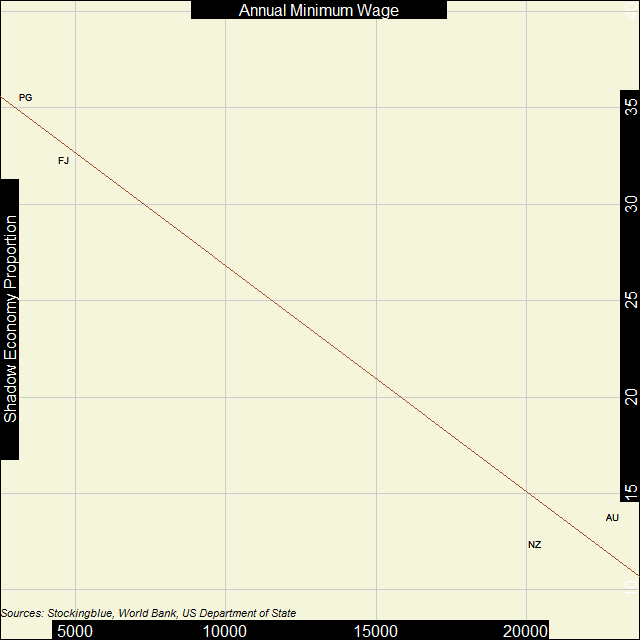
In Oceania, the inverse correlation between the strength of the shadow economy and the minimum wage is extremely strong. However, the sample size if four countries so it needs more data.
The Correlation between Minimum Wage and Economic Strength in Oceania
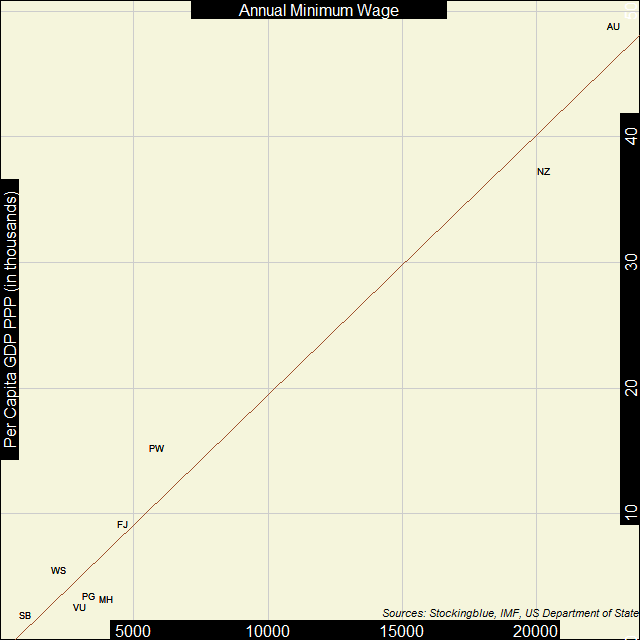
In Oceania, the correlation between economic strength and the minimum wage is extremely strong. As far as these metrics go, there's New Zealand and Australia, and then there's everyone else.
The Correlation between Shadow Economies and Economic Strength in Oceania
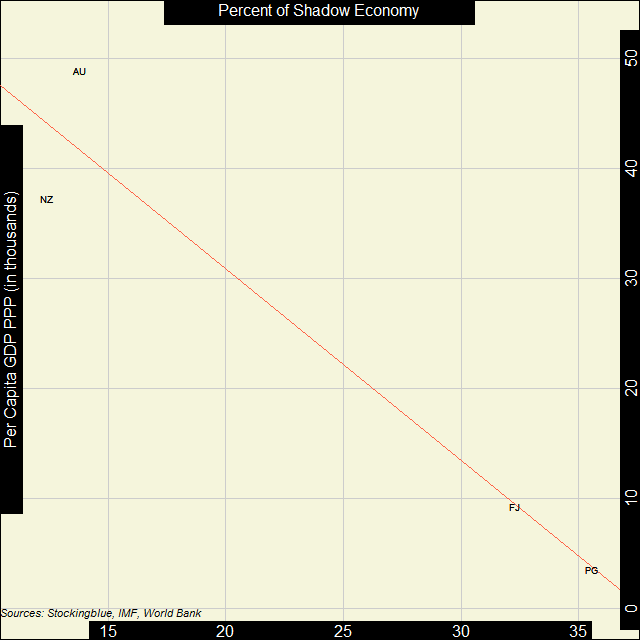
In Oceania, the correlation between economic strength and the strength of the shadow economy is pretty strong. Every country studied on the continent - excluding Papua New Guinea - has a shadow economy that takes up at most one-third of its overall economy.